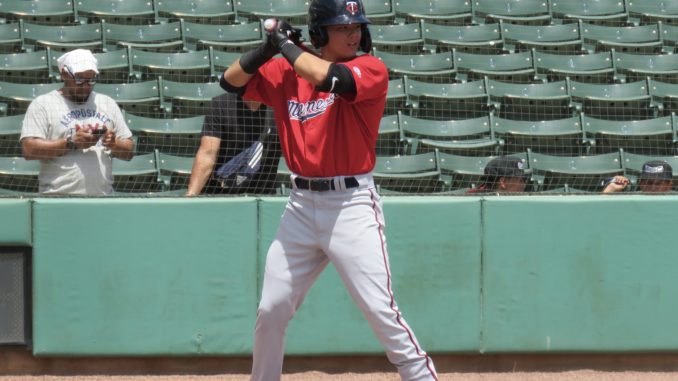
I recently got into a good conversation on Twitter with someone about Alex Kirilloff. We went back and forth discussing what we liked and didn’t like about my number one prospect, but an interesting question arose from this talk that really got me thinking:
I feel like he’s been ranked as a top prospect forever… multiple injuries, multiple surgeries, lack of power- will be interesting to see how he does this year! Who is the last twins “top prospect” to live up to high expectations/hype out of curiosity?
— Matt Saltzman (@mattsaltzman) March 11, 2021
My immediate reaction to that question was that I couldn’t answer it outright historically, but I did counter that I thought after GM Thad Levine and Executive Derek Falvey were hired (late 2016), it seemed like things changed. To me, if felt like the entire landscape of the team’s drafts and minor league system were different and much improved. Afterwards though, I wanted to see if that was true. I wondered if perhaps the general public (myself included) were a bit jaded in our beliefs because we had this idea of the Minnesota Twins always building up their farm system (as of late), yet really not seeing anything paying off. After all, I’ve only been writing here at Prospects1500 for a couple of years, yet my Top 50 lists seem to feature a lot of the same names. Shouldn’t they have been promoted and contributing by now? In fact, looking back at my first ever Top 50, my Top 5 players consisted of: Royce Lewis, Alex Kirilloff, Brusdar Graterol, Nick Gordon and Trevor Larnach. Combined they have minimal major league experience, and the one who has the most was used a trade piece for Kenta Maeda.
Note: Full disclosure, while I write this, I will have done little to no research to prepare this. What that means is I will be exploring some of the MLB Draft picks from 2017 until 2019 of the Minnesota Twins and examining in (almost) real time here. I won’t be looking at the 2020 Draft since it’s too hard to tell of any impact yet. And I realize there are other ways to determine value here, through International signings, smaller league scouting and FYPD signings as well. For the point of this exercise, I will be strictly looking at the Draft. If I’m right, then great. If I’m wrong about them, then so be it. Either way, I think it’s a great examination of how the organization has developed their prospects and seeing if and when their talent can and will come through.
Also, for each pick, you will see two evaluative methods at the end of each blurb. I will be inserting “My Ranking” of the prospect, and that will be from my Twins Top 50 List, and I will also be giving “My Grade” for each pick as well. This grade will be based on what the player has done, as well as what I believe he can do.
So now, here we go, on the road to self-examination at its finest.
Top 3 2017 MLB Draft Picks:
Round 1: Royce Lewis, SS, Jserra Catholic HS (San Juan Capistrano, Calif.)
The number one overall pick in this draft, Lewis was an incredibly solid start to the new regime in Minnesota. He came in and immediately shot up dynasty draft boards due to his 5-category potential. It didn’t hurt either that it was during a time where shortstop wasn’t as elite as it is now. In case you haven’t yet looked at what I have to say about the future of Royce Lewis, I ask that you give it a read here, and see what you think. Either way, it was a great pick that I hope eventually pays off.
My Ranking: 2
My Grade: A-
Round 1: Brent Rooker, OF, Mississippi State
An incredibly powerful player, the potential is there for 25+ home runs over a full season. Still, with limited opportunities due to the depth in front of him, it may be another year before we see the full potential of Rooker. He’s not that great with the glove, and I’ve always felt that he would make a nice replacement for Nelson Cruz once he retires.
My Ranking: 11
My Grade: B+
Round 3: Blayne Enlow, RHP, St. Amant (La.) HS
An under-the-radar pitcher who has two really good pitches. He should be up once he refines those pitches and possibly works up to a third, unless he’s rushed. Still, he’s not a high strikeout guy and needs to walk fewer batters.
My Ranking: 16
My Grade: B-
3b. Round 12: Bailey Ober, RHP, Charleston
I had to sneak this one in, as I’m a huge Bailey Ober fan. His large frame and soft tossing make him quite deceptive. He’s got a 60 grade changeup and 65 grade control (10.6 strikeouts for every walk he’s ever issued). He’s someone to watch as I think he’ll rise up my rankings if he’s healthy. He’s still got some work to do to reach the heights I think he’s capable of reaching, but the framework is there already.

My Ranking: 25
My Grade: B+
Top 3 2018 MLB Draft Picks
Round 1: Trevor Larnach, OF, Oregon State
Undoubtedly the best pick for the Twins in this draft, Larnach projects to be a powerful bat with good bat to ball skills and decent patience at the plate. He had an amazing summer camp last year (but really, who didn’t?), and he could break through at some point in 2021. Still, he’s more likely to make a more impactful impression in 2022 and should be on all of your dynasty league radars. He’s a smart and inquisitive player who is always trying to learn more and more from those around him. Once he learns how to consistently elevate the ball, he should be the 30 home run player the Twins drafted him to be.
Another day, another group of prospects gathered around Josh Donaldson in the batting cage.
This time, Donaldson has a co-instructor: Torii Hunter.
If you look closely, you can see top-100 prospect Trevor Larnach raising his hand to ask a question, like it’s an actual class. pic.twitter.com/XnaKu8DVOt
— Aaron Gleeman (@AaronGleeman) February 19, 2020
My Ranking: 4
My Grade: A-
Round 2: Ryan Jeffers, C, UNC Wilmington
This pick has the potential to pay itself back two fold in 2021, especially if Mitch Garver’s 2020 struggles continue. When stepping in last year, Jeffers went 15/55 and hit three home runs over 26 games played. He gave the Twins what they needed both with the bat and by calling games quite well too. Pitchers love throwing to him and he’s evolving into quite the all around catcher. We’ll see if the momentum continues.
My Ranking: 8
My Grade: B+
Round 5: Cole Sands, RHP, Florida State
A high strikeout pitcher who could have three really good pitches by the end of this year, Sands looks to be slowly stretched out for 100+ innings at some point in his career. He’s a slightly above average pitcher with the potential to be at the back of the rotation.
My Ranking: 17
My Grade: B-
Top 3 2019 MLB Draft Picks
Round 1: Matt Wallner, OF, Southern Mississippi
He’s not my highest ranked player from this draft class, but I have him as the team’s best pick due to the fact that he will be up and MLB ready before the third listed prospect here. Wallner has the power in his bat, as evidenced by 16 or more home runs in college three times. That said, he did struggle a bit to adapt to minor league pitching and struggled when he got the call to A Ball. It will be interesting to see where Wallner is with his development after having a year off from professional competition due to COVID-19.
My Ranking: 9
My Grade: B-
Round 2: Matt Canterino, RHP, Rice University
Another intriguing pitcher here who gets a lot of movement on his fastball (that this Spring has been up to 97.8 mph) and subsequently strikes out a lot of batters. He’s also got a changeup, a slider and a curveball, all of which he’s developing in usage and confidence. He’s someone who I may have under-rated in my rankings, as evidenced by how dominant he has looked this Spring. Look for him to debut either this season or early 2022.
If you don’t know who Matt Canterino is, you better learn his name.
Throws hard, 4 nasty pitches. Wouldn’t be surprised to see him make an MLB debut in the bullpen this season. pic.twitter.com/G1vXK39UOn
— Jeremy Maschino (@JMaschino_56) March 7, 2021
My Ranking: 15
My Grade: B
Round 1: Keoni Cavaco, IF, Eastlake (Calif.) HS
Despite being my highest ranked prospect from 2019, he’s third on this list, simply because he won’t be ready for the pros for quite some time. Still, there’s a lot to like as he’s got massive upside for a youngster who has yet to fill into his body. Consider him an investment with a high interest rate that’s due to cash in about four years down the road.
My Ranking: 7
My Grade: B
Final Exam:
Putting everything together, there wasn’t actually much to verify my statement that things have changed a lot since Derek Falvey and Thad Levine took over for the Minnesota Twins in late 2016. Sure, the players that they drafted look good on paper, but, like stated earlier, it didn’t really prove wrong the argument that a Twins player hasn’t been able to live up to expectations. Prior to 2017, the top picks from the previous few years for the Twins were Alex Kirilloff, Jordan Balazovic, Travis Blankenhorn, Nick Gordon and Byron Buxton, with the latter being drafted all the way back in 2012. So I guess it stands to reason that the Twins have not had much success developing their players into their full potential. Perhaps that’s something that they need to address.
What I do know is that since 2016, there has been a shift in the way that the Twins have been viewed. They’ve been a bit more aggressive in their offseason agency ways, such as signing Josh Donaldson to a long term contract and by trading away their highly touted prospects for an ace in Kenta Maeda. They’ve also gone about being economically, yet cautiously competitive among with regards to their payroll. They went from 59 wins in 2016 to 85 wins in 2017, spending wisely and often, unlike their predecessors.
2017 Opening Day Payroll: $108 million (22nd)
2018 Opening Day Payroll: $131.9 million (18th)
2019 Opening Day Payroll: $113 million (18th)
2020 Opening Day Payroll: $48 million (20th)
2021 Opening Day Payroll: $117.8 million (16th)
Ultimately though, we will need to wait to see if any of the aforementioned Twins prospects really do meet and exceed the lofty expectations that are set upon them. There are some really nice names to look at and dream about, but at the end of the day, productivity on the field is what counts the most. If they cannot do it, then instead of replacing the people at the top, perhaps an internal investigation within the system could be the solution to the problem.
Dave Funnell covers the Minnesota Twins minor leagues for Prospects1500. Located just south of Toronto in the city of Hamilton, he's an hour away from Buffalo (and the Bisons). He's been a fan of baseball his entire life and doesn't have a favorite team, which hopefully gives way for objectivty in analysis. Dave is in multiple keeper fantasy baseball leagues and is active on Twitter at @sportz_nutt51.

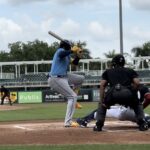
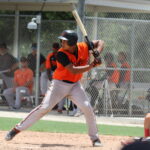
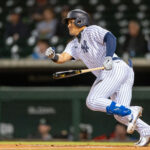
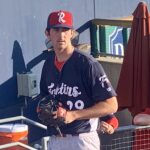
Leave a Reply